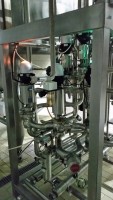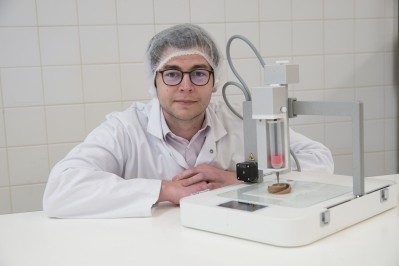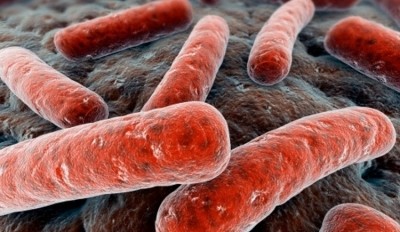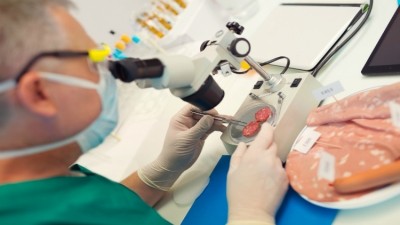FOOD SAFETY - HYGIENE AND CLEANING
Why there’s a culture shift on the horizon
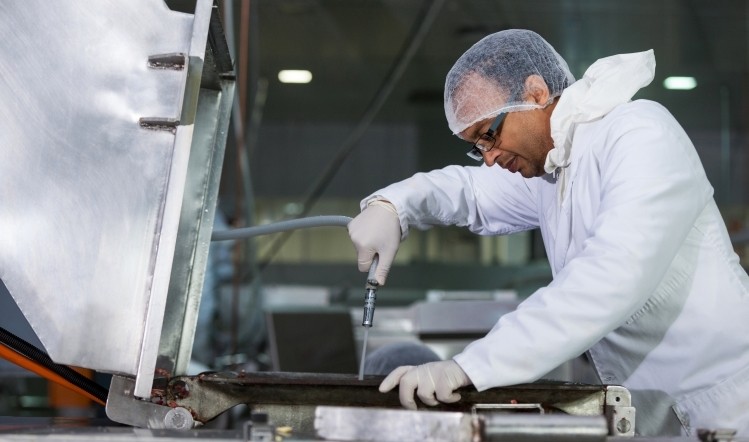
The more thorough the cleaning regime, the fewer bacterial problems a factory will face – at least, that’s the logic.
“If the basics are right in terms of a well-controlled, well-executed cleaning regime followed by a disinfectant regime, we see a big fall-off in bacterial and, to a degree, allergenic problems,” says Peter Littleton, vice-chair of the Society of Food Hygiene and Technology and technical director at Christeyns Food Hygiene.
“It’s where cleans are maybe not controlled as well as they could be, or rushed, that we see potential for pathogen survival ... and consumer risk.”
But cleaning regimes are only one part of the picture. In recent years, the role of a good food safety culture in alleviating contamination threats has gained traction, and this now been formally recognised in the latest update to the BRC Global Standard for Food Safety.
Issue 8 of the Global Standard (BRC8), which goes live on 1 February 2019, has shifted the focus towards “encouraging development of product safety culture”. It also expands the requirements for environmental monitoring of food safety and encourages sites to further develop systems for security and food defence. For food and drink firms, the Standard will mean greater scrutiny than ever before.
As well as speciality detergents, disinfectants and associated chemicals, Christeyns offers add-on services, such as auditing and training, which Littleton says will be in even more demand when BRC8 comes into force.
‘Establishing a food safety culture’
“Good manufacturing and hygiene practices, in particular, have a big role to play in establishing a food safety culture, and maintaining it going forwards,” he says. “People actually doing the right thing, whether they’re watched or not, is going to be the complete thing for the industry come BRC8.”
Christeyns prefers on-site instruction to “talk and chalk” sessions in training rooms, which can be too time-consuming for industry.
“If you can deduct 20 minutes for listeria awareness on a production line, it’s a lot easier to project a real world example as everybody gets it straight away,” says Littleton. “But it’s also looking at what we can do with chemicals to try and improve their efficiency of use, dispensing and deployment.”
A notable success story for Christeyns has been a project for Greggs across its 1,900 bakery stores, replacing five-litre chemical drums with concentrated soluble sachets over a year ago.
Staff previously used swan necks to dispense the chemical, but the soluble sachets mean they no longer come into direct contact with it and less water is used.
Luckily, the technology has aligned with the Blue Planet II-prompted backlash against non-recyclable plastics. Already removing an annual 3t of plastic from Greggs’ waste stream, this is set to increase to 6.5t.
Another layer of complexity
Of course, using chemicals adds another layer of complexity to the cleaning process, with greater restrictions around the use of biocides such as quaternary ammonium compounds (quats) proving a particular challenge.
“We’ve lost the use of one of our main disinfectants, and the others are by and large more expensive, which means their use is curtailed,” says Littleton.
Research company Campden BRI has raised concerns over the implications of restricting quats on antimicrobial controls. It has also flagged up the impact the move may have on novel products with unknown microbiology, or products that contain few preservatives or have had little processing.
The craft beer trend is one such example. A reduction in processing during brewing may produce better flavours, but could also potentially introduce spoilage organisms.
To combat such problems, Campden BRI’s services include virus control, testing for STEC E.coli, and ‘challenge testing’ products. Its wide microbial profiling service offers manufacturers the ability to improve shelf-life, hygiene, authenticity and traceability.
Swiss specialist Bühler offers ways to reduce the risk of contaminants across the low-moisture food and feed industry. Its Laatu system uses low-energy electron beam technology to significantly reduce harmful microorganisms such as salmonella, E.coli and spores in milliseconds.
“It is harsh on micro-organisms, yet as a surface treatment, it is gentle on food, with better preservation of nutrients and organoleptic properties,” says Dr Edyta Margas, food safety leader at Bühler. “In comparison with conventional technologies, Laatu has a significantly smaller footprint, and can be implemented anywhere in the processing line.”
Reducing energy consumption
Reducing energy consumption by up to 80% compared with steam systems, it is now available to the spice market and will be rolled out to other dry food markets in the future.
Other new technology on the market includes Stratio’s LinkSquare, a short wave infrared camera for collecting data to detect the freshness and, therefore, safety of produce including the presence of any dangerous pathogens.
By shining light on an object or liquid, and measuring its response to different wavelengths in seconds, it sends the results to an app on any smart device across iOS and Android applications.
Founded by graduates from Stanford University in California, Stratio is also developing BeyonSense – said to be the world’s first mobile-compatible shortwave infrared camera – for launch in early 2019.
“We want to integrate LinkSquare and BeyonSense to make a spectroscope that can actually tell the hygiene and cleanliness of food,” says Jae Hyung Lee, founder of LinkSquare.
The technology could also potentially be used to detect fraudulent food and drink or even the presence of pesticides.
Clean-in-place systems
Advances in clean-in-place (CIP) systems used in food and drink manufacture are reducing wastage on processing lines as well as enhancing hygiene:
Citing an estimated 4.1mt of food lost during processing each year in the UK, HRS Heat Exchanger says its HRS R Series can be run in reverse to recover valuable products prior to routine cleaning. The HRS Universal Product Recovery System, meanwhile, combines continual monitoring of set parameters such as Brix, pH or viscosity with the three-way valve technology used in HRS pasteurisers or sterilisers.
- Swiss technology provider Baumer, a long-time player in the dairy industry, has developed sensors aimed at avoiding wastage. The Baumer Hygienic Connection helps reduce bacteria contamination in process streams using flush-mounted sensors without collection pockets so they can be easily cleaned to minimise bacteria growth and contribute to optimised CIP performance.
- Christeyns Food Hygiene partnered with H&M Disinfection Systems to launch a bespoke containerised CIP system for optimising cleaning equipment in the food and dairy industry. It can be plugged into existing systems to replace poorly operating or defunct pump sets. “We’ve got two or three of those out in the marketplace and they’re doing very well because there isn’t the money swimming around like there used to be,” says Peter Littleton, technical director. “The primary manufacturers are getting squeezed from both ends.”
- Aesseal, meanwhile, highlights the contamination risk associated with using seals that fail to comply with EU regulations. “Modern mechanical seals and support systems have a proven track record of improving reliability, reducing energy use and significantly increasing mean time between failure compared with traditional gland-packed seals or lip seals,” says Paul Green, UK sales manager at Aesseal.

